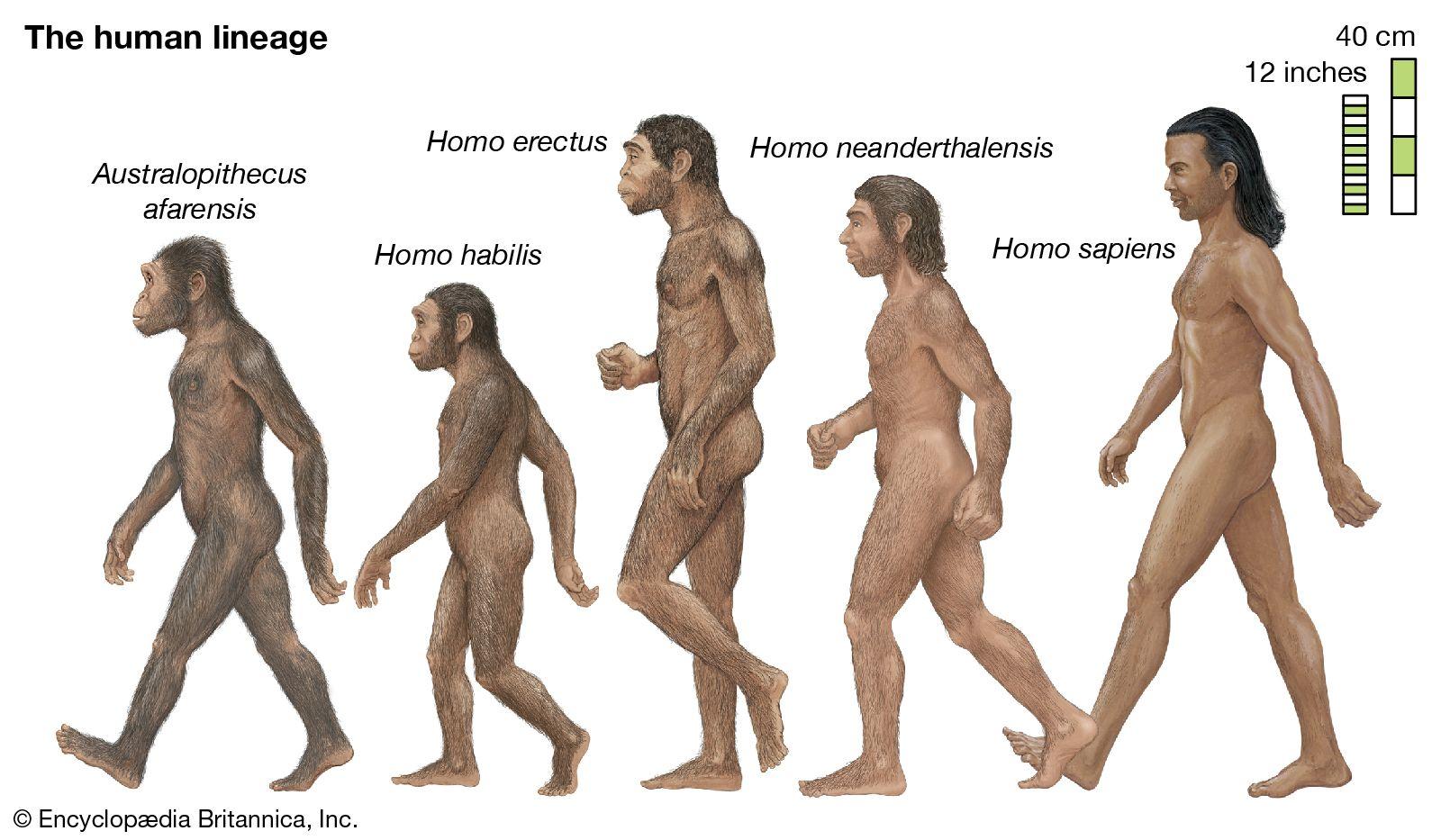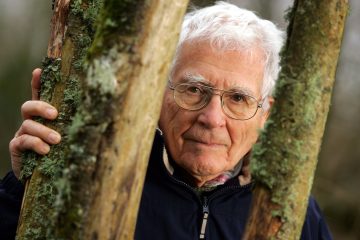Table of Contents
- Exploring the Gaia Hypothesis and Its Relevance Today
- James Lovelocks Vision of Our Interconnectedness with Nature
- Understanding the Role of Humans in a Healthy Ecosystem
- Practical Steps to Embrace Gaias Wisdom in Everyday Life
- The Future of Planetary Health: Lessons from Lovelocks Legacy
- Q&A
- To Wrap It Up
Exploring the Gaia Hypothesis and Its Relevance Today
The Gaia Hypothesis, conceptualized by James Lovelock, presents a radical understanding of Earth as a self-regulating organism. This idea posits that all living organisms and their inorganic surroundings are interconnected, forming a complex, self-sustaining system. Lovelock’s vision urges us to rethink the relationship we have with our planet. Rather than viewing humans as separate from nature, the Gaia Hypothesis highlights the importance of synergistic interactions among all elements—plants, animals, and the environment. This perspective encourages a sense of belonging, reshaping our attitudes toward conservation and environmental stewardship.
In today’s context, the relevance of Lovelock’s theory has never been more pronounced. As the world grapples with climate change, biodiversity loss, and environmental degradation, an understanding of Gaia helps frame our responsibilities. By recognizing our role as integral components in a larger ecological system, we can better appreciate the importance of sustainable practices. The hypothesis emphasizes the interconnectedness of ecological health and human well-being, suggesting that nurturing one inherently benefits the other. This notion stresses the urgency in adopting eco-friendly technologies and promoting policies aimed at restoring the planet’s equilibrium.
| Key Insights from the Gaia Hypothesis | Modern Implications |
|---|---|
| Interdependence of life forms | Supports biodiversity conservation efforts |
| Natural feedback mechanisms | Inspires climate action initiatives |
| Systems thinking in ecology | Encourages holistic approaches to environmental challenges |
Embracing the Gaia Hypothesis promotes a mindful coexistence with nature. It fosters a sense of responsibility to protect our shared home and sparks collective action that transcends cultural and geographic boundaries. In a world facing unprecedented environmental challenges, understanding our connection to Gaia can pave the way for innovative solutions and a more sustainable future. By aligning our actions with the principles of this hypothesis, we can contribute to healing the planet and ensuring that we—and future generations—truly belong to Gaia.

James Lovelocks Vision of Our Interconnectedness with Nature
James Lovelock, a prominent environmentalist and scientist, put forth a revolutionary perspective on how humanity interacts with the natural world. Central to his philosophy is the Gaia hypothesis, which posits that the Earth functions as a complex, interconnected system where living organisms interact with their inorganic surroundings to maintain conditions suitable for life. According to Lovelock, this symbiotic relationship underscores the importance of viewing ourselves not as separate entities, but as integral components of a larger ecological web. By understanding this interconnectedness, we can foster a deeper respect for the environment and our role within it.
In his works, Lovelock emphasizes several key concepts that promote this vision of interconnectedness:
- Holistic understanding: Recognizing that every action has a reaction within ecosystems.
- Human responsibility: Acknowledging that we have a duty to steward the planet, not just exploit it.
- Ecological balance: Emphasizing the importance of biodiversity and the consequences of its loss.
Moreover, Lovelock challenges us to reconsider our impact on the Earth in light of climate change and environmental degradation. He argues that our technological advancements must be guided by a conscience that values the planet’s health. This vision demands a shift in our priorities—a transition from seeing nature as a resource to recognizing it as a life-sustaining partner. By embracing this mindset, we can cultivate a future where humanity thrives in harmony with the natural world, fully acknowledging that we belong to the greater organism that is Gaia.

Understanding the Role of Humans in a Healthy Ecosystem
In the intricate web of life, humans play a significant role, acting as both stewards and disruptors within various ecosystems. Our actions can lead to the flourishing of biodiversity or, conversely, the degradation of natural habitats. Emphasizing a harmonious existence with nature requires understanding our impact on earth’s delicate equilibria. The following points outline how human interaction can positively influence ecosystems:
- Conservation Efforts: Engaging in conservation programs helps preserve endangered species and habitats, maintaining the biodiversity crucial for ecosystem health.
- Sustainable Practices: Adopting farming, fishing, and forestry practices that prioritize sustainability ensures natural resources remain viable for future generations.
- Education and Awareness: Raising awareness about environmental issues fosters a community of informed citizens who are inspired to make environmentally conscious decisions.
Furthermore, human innovation can lead to solutions that restore and rehabilitate damaged ecosystems. Technological advancements have opened pathways to address environmental concerns effectively. From the development of biodegradable materials to the creation of renewable energy sources, our ingenuity provides valuable tools to mitigate harm and promote healing. In this context, consider the following initiatives:
| Innovative Solutions | Benefits |
|---|---|
| Reforestation Projects | Sequester carbon, improve air quality |
| Urban Green Spaces | Enhance biodiversity, improve mental health |
| Waste Reduction Campaigns | Minimize landfill use, promote recycling |
Ultimately, the success of human involvement in preserving our ecosystems hinges on our collective responsibility to respect and understand the natural world. By recognizing that our health and the planet’s health are intertwined, we can approach coexistence with intention and respect. This symbiotic relationship encourages a sustainable future where both humans and nature can thrive together.

Practical Steps to Embrace Gaias Wisdom in Everyday Life
Embracing the wisdom of Gaia begins with a shift in perspective about our relationship with the Earth. Recognizing that we are a part of a larger ecosystem allows us to make conscious choices that support the health of the planet. Mindfulness practices, such as meditation and nature walks, can deepen our connection to the natural world. Here are some simple yet effective ways to integrate this awareness into daily life:
- Practice gratitude for nature every day, whether it’s a blooming flower or the air we breathe.
- Engage in eco-friendly habits, like reducing waste and conserving water, highlighting our role in sustaining the environment.
- Establish a connection with local flora and fauna by observing wildlife in your area or starting a garden with native plants.
Additionally, education plays a crucial role in understanding Gaia’s wisdom. By learning about ecological balance and climate change, we can better appreciate our responsibilities toward the planet. Joining community groups focused on environmental sustainability can also cultivate a sense of belonging and shared purpose. Here are practical avenues for educational engagement:
- Participate in local conservation projects to directly contribute to the health of your surroundings.
- Attend workshops on sustainable living to gain practical skills and insights.
- Read books and articles that emphasize the interconnectedness of life and the principles of ecology.
Lastly, incorporating rituals that honor the Earth into your routine can solidify your commitment to living in harmony with Gaia. These rituals may vary widely according to personal beliefs but can include everything from celebrating seasonal changes to collective mindfulness practices. Consider these ideas to create meaningful connections:
| Ritual | Description |
|---|---|
| Seasonal Celebrations | Mark the equinoxes and solstices with gatherings to reflect on nature and change. |
| Nature Journals | Keep a journal to note observations of nature, promoting awareness and appreciation. |
| Dedicating Time to Silence | Spend time in silent reflection outdoors, fostering a deeper connection with the environment. |

The Future of Planetary Health: Lessons from Lovelocks Legacy
James Lovelock’s vision of Gaia has revolutionized our understanding of planetary health and the intricate systems that sustain life on Earth. His insights emphasize that human health is inextricably linked to the vitality of our environmental systems. As we confront the escalating challenges of climate change, biodiversity loss, and environmental degradation, recognizing our role within the Earth’s ecosystem becomes paramount. Lovelock encourages us to see ourselves not as separate entities but as integral parts of a larger whole, fostering a mindset that prioritizes sustainability and cooperation with nature.
One of the core lessons from Lovelock’s legacy is the importance of holistic thinking in addressing ecological crises. This involves understanding the interconnectedness of various ecological components. To do this effectively, we might draw on several key principles:
- Sustainability: Aiming for practices that meet present needs without compromising future generations.
- Interconnectedness: Recognizing the links between different species and ecosystems and how changes in one can affect the others.
- Adaptability: Developing systems and practices that can evolve in response to changing environmental circumstances.
As we look to the future, it’s crucial to implement frameworks based on Lovelock’s insights. Implementing such frameworks can lead to innovative solutions that promote planetary health. Below is a table that showcases potential strategies inspired by Lovelock’s thoughts:
| Strategy | Description |
|---|---|
| Urban Green Spaces | Integrating parks and green roofs in urban areas to improve air quality and biodiversity. |
| Circular Economy | Shifting toward a system where waste is minimized and resources are reused and recycled. |
| Regenerative Agriculture | Practices that restore soil health and ecosystem balance while maintaining food production. |
Q&A
Q&A: Exploring James Lovelock’s “We Belong to Gaia”Q: Who is James Lovelock and what is the central idea behind “We Belong to Gaia”?A: James Lovelock is an esteemed scientist and environmentalist, renowned for his work in Earth system science and for developing the Gaia hypothesis. In “We Belong to Gaia,” Lovelock expands on the idea that Earth and all its living organisms form a single, interconnected entity—the Gaia system. He argues that humanity is not separate from, but rather an integral part of, this complex web of life. Lovelock calls for a shift in our perspective, encouraging us to recognize our responsibilities toward the planet.
Q: What does Lovelock mean by the term ‘Gaia’?A: The term ‘Gaia’ refers to the concept that the Earth functions as a self-regulating, complex system where living organisms interact with their inorganic surroundings to maintain conditions conducive to life. Lovelock personifies Earth as a living entity, stressing that all species, including humans, contribute to the overall health and stability of this system.
Q: How does Lovelock believe humans impact Gaia?A: Lovelock suggests that human activities have a profound impact on the Gaia system, often leading to detrimental consequences. Climate change, pollution, habitat destruction, and biodiversity loss threaten the delicate balance of life on Earth. He emphasizes the need for sustainable practices and a collective effort to restore harmony within the system.
Q: What actions does Lovelock advocate for individuals and governments to take?A: Lovelock encourages both individuals and governments to adopt policies and practices that prioritize ecological well-being. This includes transitioning to renewable energy sources, reducing carbon footprints, conserving biodiversity, and protecting natural habitats. He believes that fostering a deep respect for nature is essential for achieving a more sustainable future.
Q: How has “We Belong to Gaia” been received by the scientific community and the public?A: The reception of “We Belong to Gaia” has been largely positive, with many praising Lovelock’s clear articulation of the interconnectedness of life. His ability to blend scientific insight with philosophical reflections resonates with both the scientific community and the general public. While some critique aspects of his views, especially around technology and its role in environmental sustainability, his work continues to inspire meaningful dialogue about humanity’s relationship with nature.
Q: What are the implications of Lovelock’s ideas for future generations?A: Lovelock’s ideas serve as a crucial reminder of our shared responsibility toward the planet. He emphasizes that if we do not change our behavior and outlook regarding our place within the Gaia system, future generations will face severe ecological challenges. His message advocates for proactive stewardship of Earth to ensure that it remains a thriving home for all forms of life.
By understanding Lovelock’s insights in “We Belong to Gaia,” we can cultivate a deeper appreciation for our environment and the critical role we play in preserving it for future generations.



0 Comments